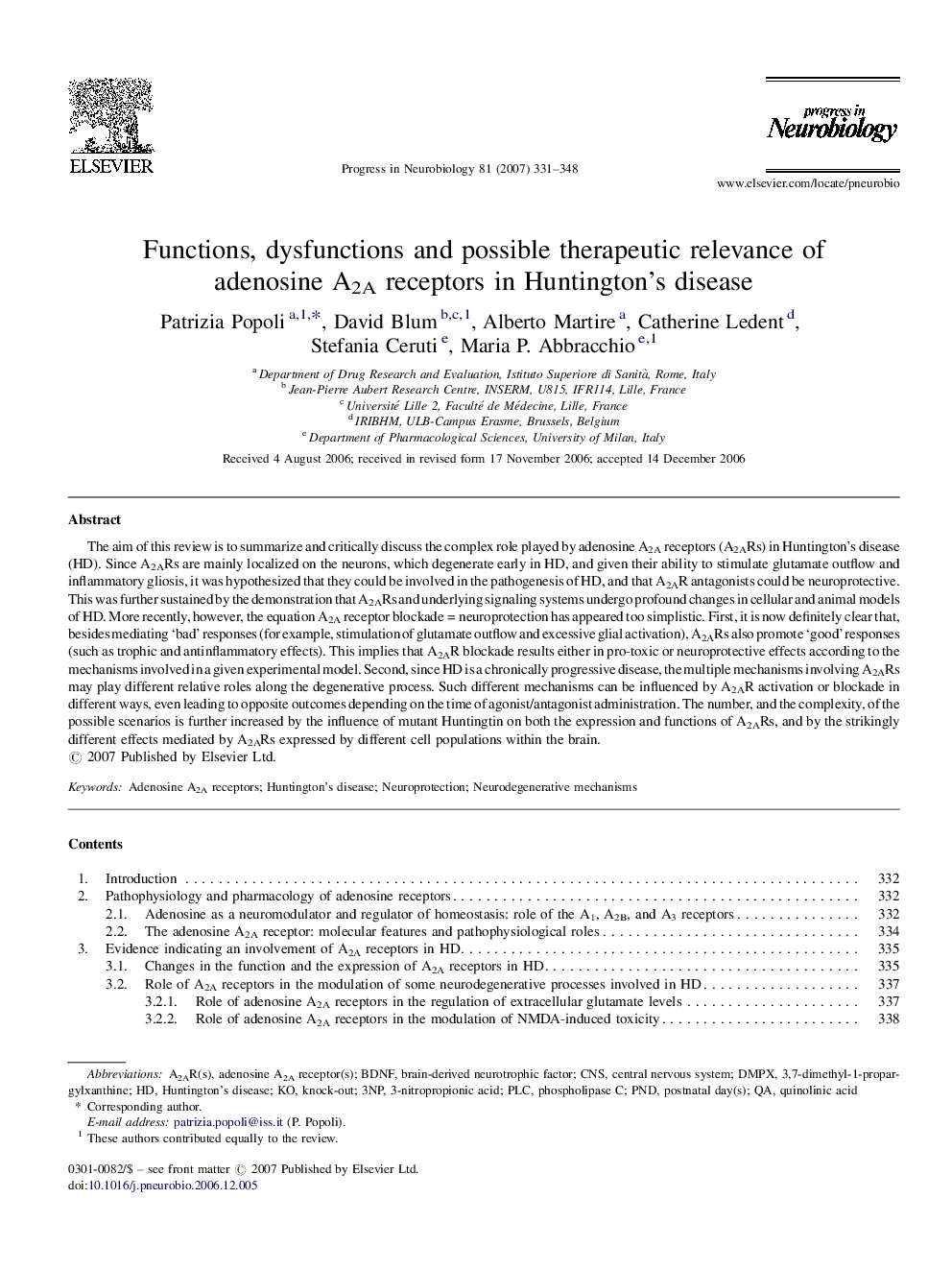| Article ID | Journal | Published Year | Pages | File Type |
|---|---|---|---|---|
| 4353951 | Progress in Neurobiology | 2007 | 18 Pages |
Abstract
The aim of this review is to summarize and critically discuss the complex role played by adenosine A2A receptors (A2ARs) in Huntington's disease (HD). Since A2ARs are mainly localized on the neurons, which degenerate early in HD, and given their ability to stimulate glutamate outflow and inflammatory gliosis, it was hypothesized that they could be involved in the pathogenesis of HD, and that A2AR antagonists could be neuroprotective. This was further sustained by the demonstration that A2ARs and underlying signaling systems undergo profound changes in cellular and animal models of HD. More recently, however, the equation A2A receptor blockade = neuroprotection has appeared too simplistic. First, it is now definitely clear that, besides mediating 'bad' responses (for example, stimulation of glutamate outflow and excessive glial activation), A2ARs also promote 'good' responses (such as trophic and antinflammatory effects). This implies that A2AR blockade results either in pro-toxic or neuroprotective effects according to the mechanisms involved in a given experimental model. Second, since HD is a chronically progressive disease, the multiple mechanisms involving A2ARs may play different relative roles along the degenerative process. Such different mechanisms can be influenced by A2AR activation or blockade in different ways, even leading to opposite outcomes depending on the time of agonist/antagonist administration. The number, and the complexity, of the possible scenarios is further increased by the influence of mutant Huntingtin on both the expression and functions of A2ARs, and by the strikingly different effects mediated by A2ARs expressed by different cell populations within the brain.
Keywords
Related Topics
Life Sciences
Neuroscience
Neuroscience (General)
Authors
Patrizia Popoli, David Blum, Alberto Martire, Catherine Ledent, Stefania Ceruti, Maria P. Abbracchio,
